Text

The idea for vaccination was introduced from the African tradition of inoculation by an enslaved person named Onesimus.
In the midst of the coronavirus pandemic, one of the hottest topics of discussion is when, and how, we can quickly get a vaccine developed.
But we wouldn't even be discussing that opportunity if not for the introduction of African inoculation techniques by a man named Onesimus.
In the early 16th century, Onesimus was sent from Libya to Boston to the Puritan church minister Cotton Mather. During his time as a slave to Mather, Onesimus told him about a centuries-old technique of inoculation used in Africa. Onesimus described how Africans would extract materials from an infected person and scratch it into the skin of a non-infected person to create a system of immunity.
Highly intrigued, Mather convinced a doctor in Boston to experiment with the technique when a smallpox epidemic hit the area in 1721.
Though the technique was considered highly dangerous at the time, Onesimus opened up the path for experimentation with vaccine development, and his information was eventually used to inoculate soldiers during the Revolutionary War.
To read more: https://www.microbigals.com/amp/the-history-of-onesimus-the-black-slave-who-helped-stop-smallpox
#black history#black and proud#black pioneers#african america history#african american history#black history month#black history matters
6 notes
·
View notes
Text

Siya Kolisi, the first black South African national rugby team (the Springboks) captain - a world cup winning captain in 2019.
6 notes
·
View notes
Photo

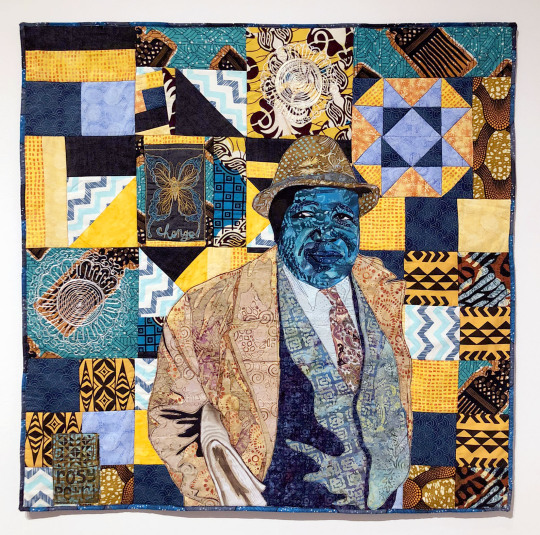
Pictured above- Call Me Mrs. Mary E. Pleasant: The Midas Touch by L'Merchie Frazier- a portrait of entrepreneur, civil rights activist and benefactor, Mary Ellen Pleasant who made a name and a fortune for herself in Gold Rush era San Francisco. Her timeline from 1814 to 1904 begins in racial slavery as an indentured servant girl with no formal education. She ascended to a self-made millionaire, amassing a fortune in her lifetime of over $30 million, ($900 million today).
The second image is A Good Soldier: Thomas C. Fleming, America's Longest Serving Black Journalist by Rosy Petri- At the time of his retirement in 1997, California journalist Thomas C. Fleming was the nation's oldest Black journalist with the longest consecutive period of publication.
Both of these quilts are from Black Pioneers: Legacy in the American West at The James Museum of Western and Wildlife Art. Organized by historian, artist, and curator Dr. Carolyn Mazloomi, it includes 50 pictorial quilts created by members of Women of Color Quilters Network, a group founded by Mazloomi in 1985.
Mazloomi's statement at the exhibition entrance-
American history is incomplete without the stories of African American men and women, from our enslaved ancestors to our societal challenges. The role of African Americans in the movement toward westward expansion has been largely overlooked. This exhibition of original pictorial quilts brings into focus the rich and diverse stories and achievements of Blacks in American western history. The timeline begins with Esteban's 1528 arrival in the West and continues through the Civil Rights Movement.
At the end of Reconstruction in the South, discrimination and segregation caused African Americans to seek opportunities where there was less prejudice. In the 1800s, they moved by the thousands to the American West. Some went West as slaves, while free African American men joined the United States Army or became ranch hands, fur traders, cowboys, or miners.
Why quilts? Quilts and quilt making are important to American, and Black culture in particular. The art form was historically one of the few mediums accessible to marginalized groups to tell their own story, to provide warmth for their families, and to empower them with a voice through cloth. Using quilts to tell these stories accentuates the intersections of African Americans in the Western frontier while at once informing about the art form and its role in Black history. It is this often unknown and underappreciated shared reality that must be voiced if we are ever to truly value the unique contributions diverse groups make to the fabric of our nation.
The impressive quilts on view educate viewers with stories of individuals and events in African American history that may not have previously been familiar, and present new perspectives on those that are. It's a wonderful way to utilize a visual medium to captivate, inform, and often inspire.
This exhibition closes on 1/8/2023.
#the james museum#dr. carolyn mazloomi#women of color quilters network#quilts#fiber arts#l'merchie frazier#rosy petri#black history#black pioneers#art#florida art shows#st pete art shows#art shows#quilt art#mary ellen pleasant#thomas c fleming
5 notes
·
View notes
Text
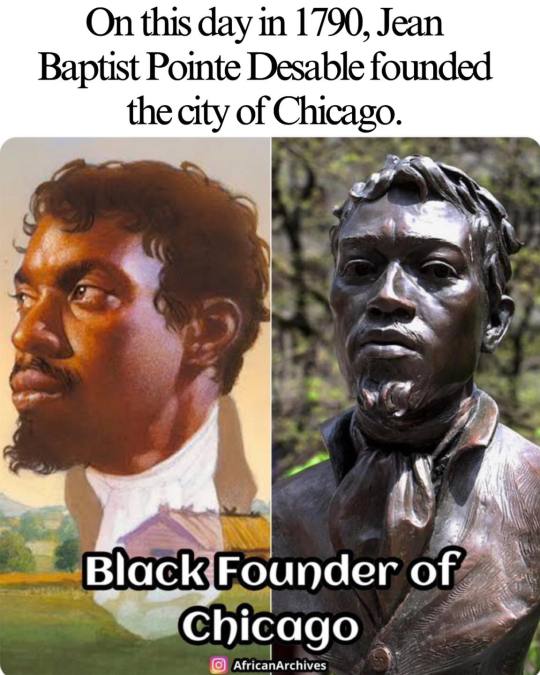
Jean-Baptiste Pointe DuSable was born in Saint-Domingue, Haiti (French colony) during the Haitian Revolution. At some point he settled in the part of North America that is now known as the city of Chicago and was described in historical documents as "a handsome negro" He married a Native American woman, Kitiwaha, and they had two children. In 1779, during the American Revolutionary War, he was arrested by the British on suspicion of being an American Patriot sympathizer. In the early 1780s he worked for the British lieutenant-governor of Michilimackinac on an estate at what is now the city of St. Clair, Michigan north of Detroit. In the late 1700's, Jean-Baptiste was the first person to establish an extensive and prosperous trading settlement in what would become the city of Chicago. Historic documents confirm that his property was right at the mouth of the Chicago River. Many people, however, believe that John Kinzie (a white trader) and his family were the first to settle in the area that is now known as Chicago, and it is true that the Kinzie family were Chicago's first "permanent" European settlers. But the truth is that the Kinzie family purchased their property from a French trader who had purchased it from Jean-Baptiste. He died in August 1818, and because he was a Black man, many people tried to white wash the story of Chicago's founding. But in 1912, after the Great Migration, a plaque commemorating Jean-Baptiste appeared in downtown Chicago on the site of his former home. Later in 1913, a white historian named Dr. Milo Milton Quaife also recognized Jean-Baptiste as the founder of Chicago. And as the years went by, more and more Black notables such as Carter G. Woodson and Langston Hughes began to include Jean-Baptiste in their writings as "the brownskin pioneer who founded the Windy City." In 2009, a bronze bust of Jean-Baptiste was designed and placed in Pioneer Square in Chicago along the Magnificent Mile. There is also a popular museum in Chicago named after him called the DuSable Museum of African American History.
x
#Jean-Baptiste Pointe DuSable#Haitian Revolution#Chicago history#founder of Chicago#black history#Native American wife#Kitiwaha#American Revolutionary War#British arrest#Michilimackinac#St. Clair Michigan#trading settlement#Chicago River#John Kinzie#European settlers#Great Migration#Carter G. Woodson#Langston Hughes#Windy City#bronze bust#Pioneer Square#Magnificent Mile#DuSable Museum#African American history
575 notes
·
View notes
Text

i'd fall a billion times, but you wouldn't let me ♫
#rain world#rain world oc#rain world au#rw pioneer#antho slugcat#slugcat#tw blood#(only a small amount)#this is the black pearl that contains an ancient poem#which Marbles' name comes from - her identity#apologies for slow updates on my ask blog#the weather is crap and i'm struggling with motivation bleh#kalivasquez#kalivasquezart#2024
149 notes
·
View notes
Text



Attention passengers! The mail has arrived from 1974.
It's been a hectic couple of months between work obligations and DJ's real-life move to Chicago, but the latest update to The Future is Still Silver and Black is live!
We have a few major updates to the site this time around. DJ spent the better part of her off-hours working on the Timeline feature introduced in the last update. It now covers all the Illinois Railway Museum's acquisitions, significant events, and projects (that we're aware of) from 1953 to 2024. We've also added some gorgeous art for NYC 999 and the U-505 submarine to the Engines, Etc. page, once again courtesy of the amazing @ferlost!
To everyone who asked about updates, sent in questions, and gave our old letters a reread in the meantime: Thank you for your patience. You are what keeps this train rolling forward. On to 1975!
95 notes
·
View notes
Video
tumblr

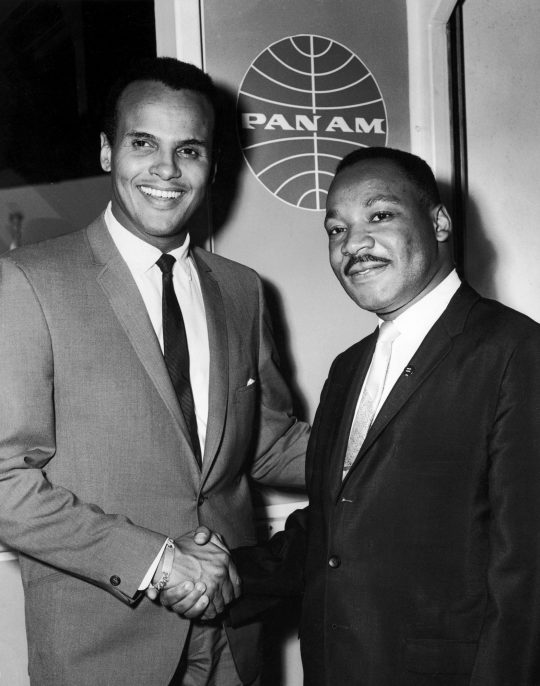

March 1st, 1927 - April 25, 2023
RIP to the great Harry Belafonte.
What a life.
Daylight come and me wan’ go home.
#Harry Belafonte#RIP#Black Culture#Civil Rights#MLK#Jamaican#Heart Failure#Banana Boat#Day-O#Music#Pioneer#Video#Inspiration#Activist
757 notes
·
View notes
Text

December 2003 PDX Portland Oregon U.S.A.
© KOJI ARAKI Art Works
Daily life and every small thing is the gate to the universe :)
#2003#December#December 2003#PDX#Portland#Oregon#downtown#night photo#night photography#around the Pioneer Courthouse Square#roadside tree#tree#street light#light#sidewalk#TRI-MAT#MAX#streetcar platform#streetcar track#building#photographers on tumblr#b&w photography#black and white photography#monochrome photography#original photography#photography#koji araki art works#SONY Cyber-shot DSC-F77#Cyber-shot#SONY
49 notes
·
View notes
Text

Dorothy Dandridge
#vintage#hollywood#actress#dorothy dandridge#pioneer#retro#black and white#diva#so beautiful#classic actress#vintage hollywood#50's#old hollywod glamour
44 notes
·
View notes
Text
WIP Tag Game
Thanks for the tag @sri-verse
I'm tagging: @catjar91 and @wretchedanddivinee
This is a snippet of the first part of chapter 10 of a touch of fate (I'm currently editing this chapter)
Cedric found himself falling into an easy routine here, so easy in fact, that he barely noticed when a month had gone by. Time was racing by, which was ironic, because time wasn’t something they had a lot of, not if they wanted to complete their mission. He knew this wasn’t his original time, his original life, but he was comfortable here. He would always miss his father and his friends, but he found comfort and companionship with his family in this time, and with Harry. The friends he was making here were both similar and different from his friends back home. His House was so familiar that it felt like coming home. Dividing his time between Harry, his friends, quidditch, and classes, he was fairly busy. Not too busy, however, to notice that a certain Black was watching him. It started last night during Astronomy. Cedric had noticed Alphard in the class before (since so many students dropped it after fifth year, their classes were combined), usually sitting close to the other Slytherins, but he hadn’t thought much of it. After all, he’d resolutely ignored him after Cedric offended him during quidditch tryouts. But last night he’d been staring at Cedric more often than the stars. Cedric couldn’t say he knew the oldest Black boy, but he seemed to love Astronomy (as did the rest of his family). He didn’t think he was more interesting than celestial bodies, but he assumed this was something he was put up to. Harry told him Alphard had been following and watching him all of the sudden, and they both knew who was the mastermind behind that. That was just as well, since he’d been looking for an excuse to talk to him again, anyway. The library was mostly empty during Cedric’s free period on Thursday. He chose a table in the middle of the room, so when Alphard walked into the library he could see him immediately, and vice versa. He wasted some time in the nearby stacks, but Cedric knew he was watching him. Although, he didn’t draw attention to him, but instead kept working on his potions essay. Slughorn was a much nicer person than Snape, but he still graded with the same level of harshness and high expectations. Cedric was so engrossed in his work that he hadn’t noticed when Alphard finally joined him, pulling out the chair across from him. He glanced up and smiled. “Hey, Alphard.” “Diggory,” he replied, voice stiff and terse. Oh no, that wouldn’t do at all. He leaned forward, folding his arms over his book. “I have a first name, you know, that I’d rather you use.” “That’s rather informal,” Alphard replied. “We barely know each other.” Cedric shrugged. “I’m not forcing you to speak with me. Why sit with me if you wish to remain so formal?” He asked, voice laced with faint amusement. Alphard bristled. “Don’t flatter yourself on my behalf. What if I’m not here for you?” Cedric couldn’t help but chuckle. He reminded him a bit of Cho, with their similar raven hair (albeit Alphard had pretty curls as opposed to Cho’s straight hair), fair skin, and their studious yet shy nature. He glanced down—yes, down, since Alphard was also short, around Cho’s height, the top of his head reaching his chin—and grinned.
#tomarry#time travel au#cedric diggory#alphard black#i am the pioneer of this ship#harry potter#tom riddle#tomarrymort#voldemort#ao3#fanfic#ao3 fanfic#virgil anon on ao3#help im struggling with this chapter actually#i promise i wanna update#wip#wip tag
22 notes
·
View notes
Text

Black History Month: African American history you probably weren't taught in school
CR Patterson & Sons was the first and only African American-owned and operated automobile company.
The company was founded by Charles Richard Patterson, a man born into slavery in Virginia in 1833. Between 1841 and 1843, the Patterson family relocated and settled down in Greenfield, Ohio, where Patterson became skilled in blacksmithing and found working making high-quality carriages.
By 1873, he formed a business partnership with a white man named J.P. Lowe, and just two decades later he became the sole owner of CR Patterson & Sons. From 1893 to 1910, the company listed around 28 models of buggies and carriages.
After Patterson died in 1910, his son, Frederick Patterson, took over the company and transitioned it to horseless carriages, and eventually to the Patterson-Greenfield automobile. Frederick was a leading figure of his own — he was the first black man to play football for The Ohio State University. The company gained success and great pride with its automobile model, which was originally listed at $675.
To this day, C.R. Patterson & Sons remains the only Black-owned and operated automobile company in American history, according to the Smithsonian National Museum of African American History and Culture.
Read more: https://nmaahc.si.edu/explore/stories/only-african-american-automobile-company
(photo)Fred Patterson. Courtesy of the Historical Society of Greenfield, Ohio
#black excellence#black pioneers#black history matters#black and proud#african america history#african american history#black history#black history month#black tumblr#black americans
5 notes
·
View notes
Text
8 Black Pioneers in Medicine and Healthcare You Should Know | American College of Healthcare Executives


0 notes
Photo
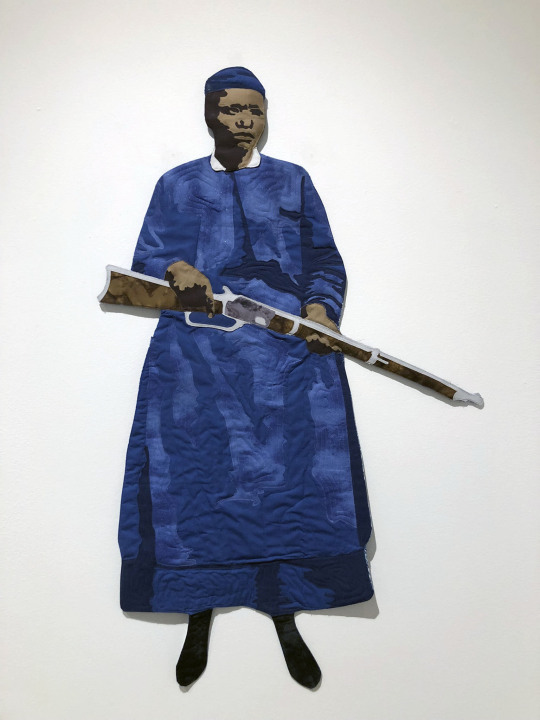
Stagecoach Mary by Dorothy Burge is one of the many incredible quilts in The James Museum of Western and Wildlife Art ‘s exhibition “Black Pioneers: Legacy in the American West” organized by historian, artist, and curator Dr. Carolyn Mazloomi.
From the museum’s wall information about the work-
Mary Fields- also known as Stagecoach Mary, Black Mary and White Crow-became a Wild West legend because she was the second woman and the first African American woman star route mail carrier in the United States.
Born into slavery and freed after the Civil War, she worked as a servant and laundress for families on riverboats before moving to Montana in 1885. A decade later she became a star route carrier, delivering mail using a stagecoach. She drove the 15-mile route from Cascade to Saint Peter’s Mission, Montana, from 1895 to 1903. Nicknamed Stagecoach Mary, she was known for her reliability and speed.
The six-foot-tall Fields was a quick-shooting and hard drinking mail carrier who wore men’s clothing and flaunted a revolver and a rifle. Locals praised her kindness and generosity, and schools in the town of Cascade were closed each year to celebrate her birthday. Cascade’s mayor granted her an exemption to enter saloons after Montana passed a law forbidding women from entering these establishments.
This exhibition closes 1/8/23.
#dorothy burge#the james museum#the james museum of western and wildlife art#dr. carolyn mazloomi#st pete art shows#florida art shows#art shows#art#quilts#fiber art#stagecoach mary#black history#black pioneers
3 notes
·
View notes
Text
guys did you know my first kuro ship was literally between two characters who never interacted (because one of them wasn’t even a canon character)
hannahtaker used to be my everything but then i ended up turning UT into a gay man and shipping him with seb, and hannah turned into a lesbian and i ship her with angela now😭😭😭
i came full circle so now i just depict them as bffs for life because i do think they’d get along. yall don’t understand their friendship like i do
#black butler#kuroshitsuji#pitchbat speaks#this was… back in like 2021-2022 me thinks#I thought it was appealing because hannah is this elegant beautiful woman and UT is some freak#but now i also make hannah a bit of a freak so#they’re freaky besties now!!!#so not only did i pioneer sebtaker but i also pioneered hannahtaker back in the day
15 notes
·
View notes
Photo
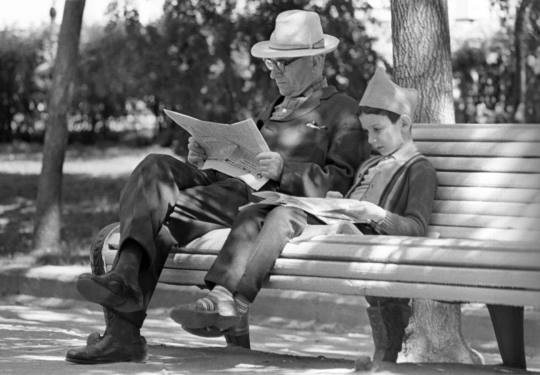
Grandfather and grandson read in the park. Photo by Pyotr Nosov (Moscow, 1964).
184 notes
·
View notes
Text
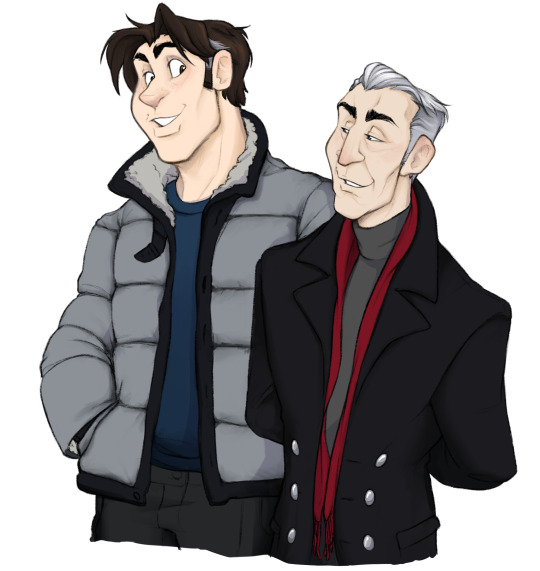
Hey everyone, and happy happy holidays to you all! For the occasion, @djangodurango and I got you a pair of cozy diesel engines and a pretty extensive update to The Future Is Still Silver And Black.
This update includes: New graphics! A guestbook! A searchable timeline! Art by the incredible @ferlost! And an all new set of letters! (As well as some edits to the old ones, shh!)
As always, thank you so much for your continued interest and support! We've been working really hard on this for a good few months and we're so excited to share our progress with you to close out 2023!
#the future is still silver and black#silver pilot#pioneer zephyr#my art#ray plays trains#cb&q 9911a#cb&q 9900#hibernal salutations everyone!
97 notes
·
View notes